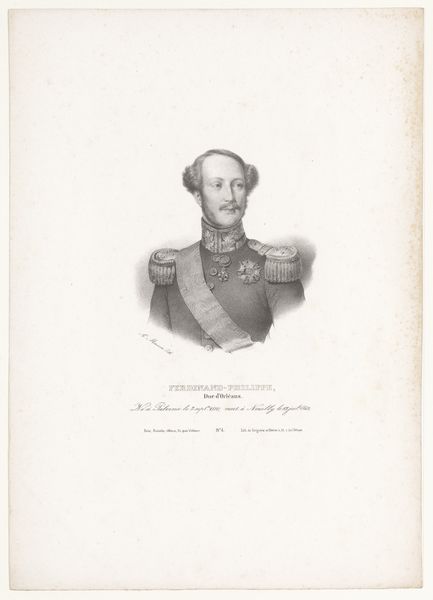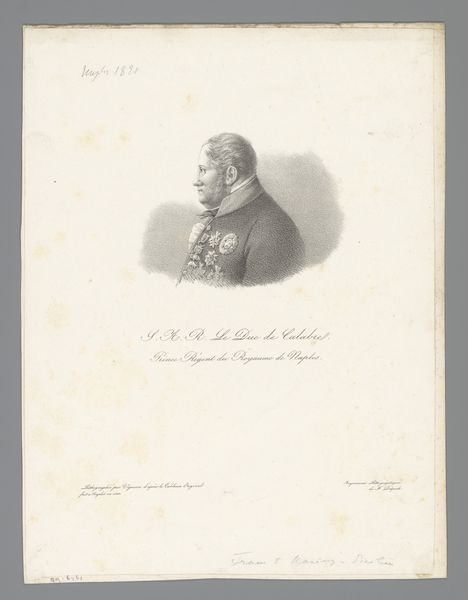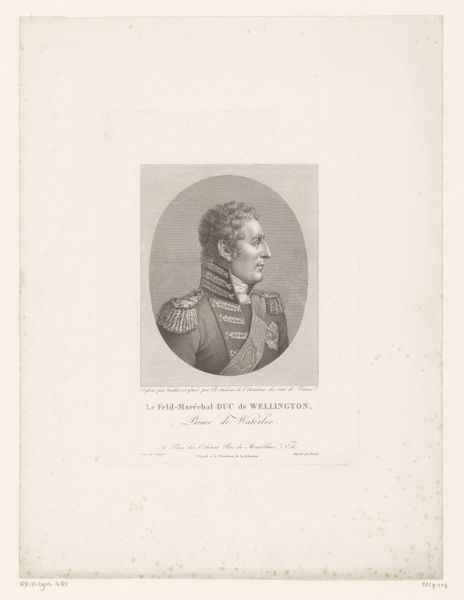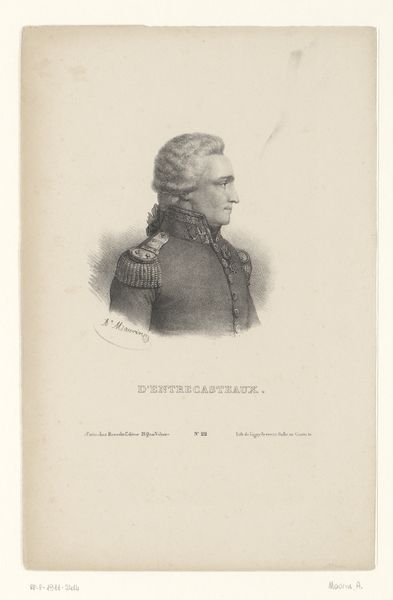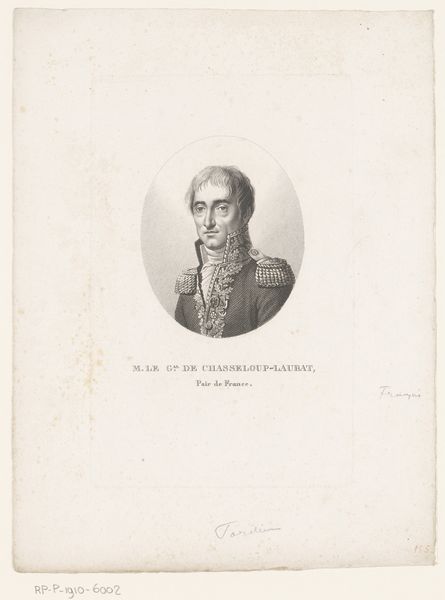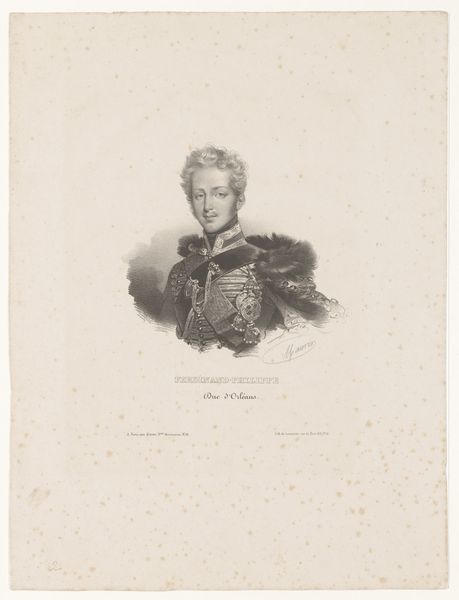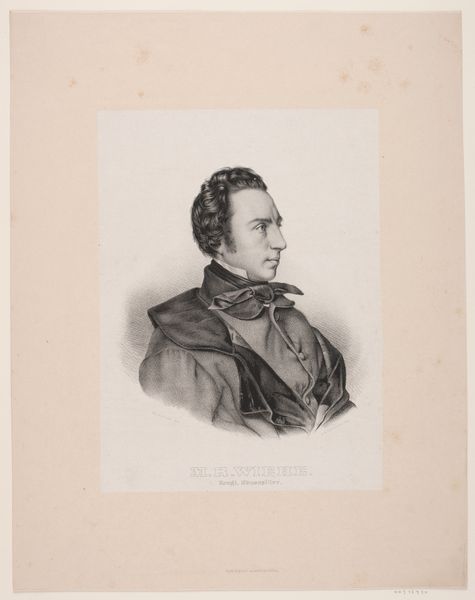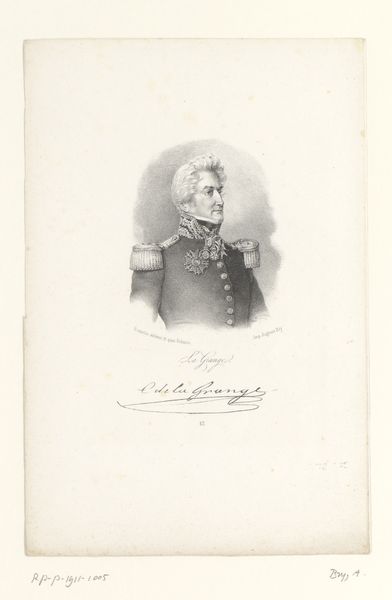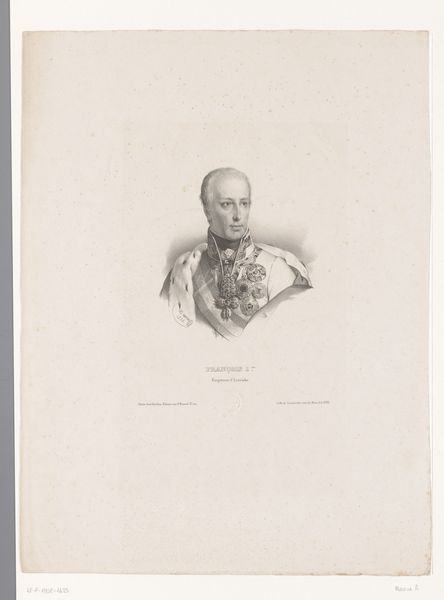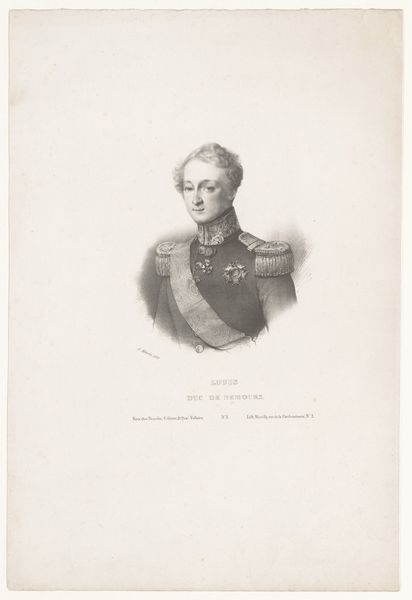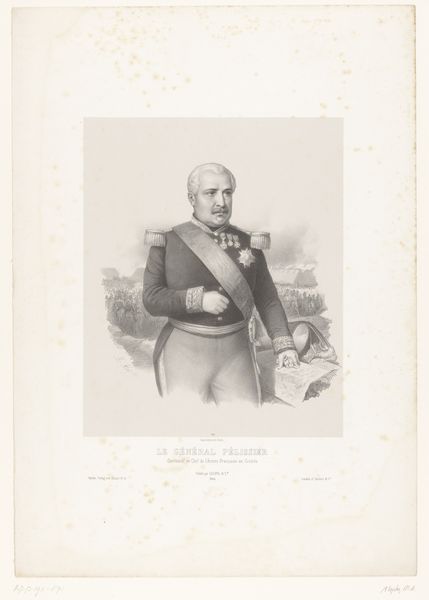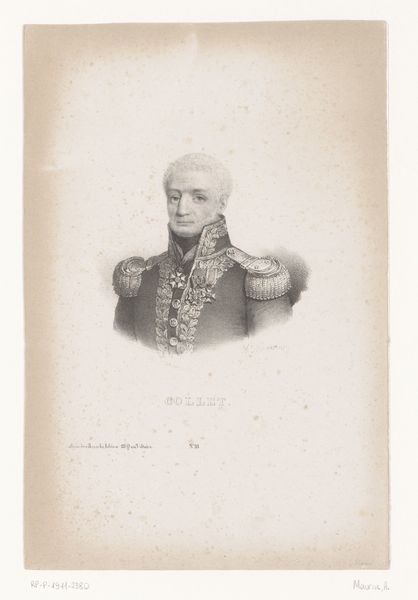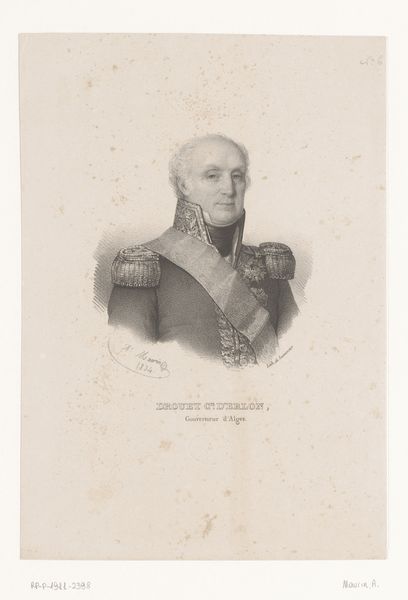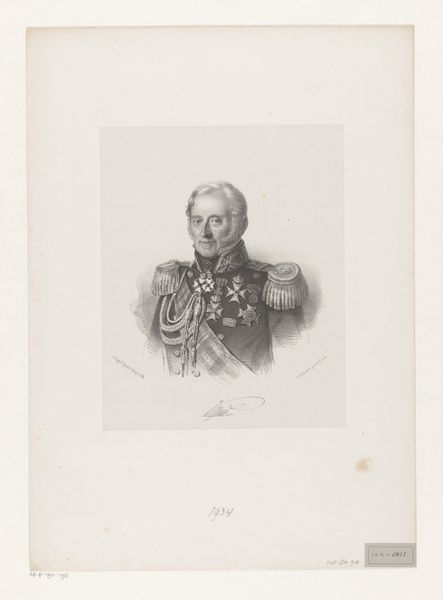
drawing, print, graphite
#
drawing
#
neoclacissism
# print
#
graphite
Dimensions: height 258 mm, width 210 mm
Copyright: Rijks Museum: Open Domain
Curator: This is an 1825 graphite drawing and print entitled "Portret van Maximilien Sébastien Foy" by Pierre Roch Vigneron, rendering a profile view of the titular general. It exudes the controlled elegance characteristic of neoclassicism. What do you make of this portrait? Editor: It seems like a fairly straightforward portrait of a military man, maybe even a bit formal, but the more I look, the more I wonder: what’s the context of depicting a military figure like this during this time? Curator: Excellent question! To really see this, we must consider the tumultuous decades following the French Revolution. How do you think an image like this would have been received considering the social and political currents of post-revolutionary France? Do you think its message would have changed based on who was viewing it? Editor: Well, I imagine it would depend on their politics, right? Someone who supported the restored monarchy might see General Foy, a decorated Napoleonic soldier, differently than, say, a Bonapartist or someone with Republican sympathies. Curator: Precisely. Vigneron’s artistic choice to present General Foy in this manner engages with larger discussions about military power, leadership, and the evolving social hierarchies of post-revolutionary France. What sociopolitical values do you think it underscores? Editor: Thinking about it in that context, perhaps it's an attempt to reconcile these figures within the evolving national narrative, presenting Foy as a figure of honor, rather than solely as a reminder of past conflicts. The almost softened neoclassicism definitely points to a romanticized past, or at least an idealized national project. Curator: Exactly. By understanding the political landscape of the time, the portrait opens itself up for broader considerations regarding France’s identity after the revolutionary and Napoleonic periods. It compels us to reconsider art's role within culture and history. Editor: I see. So, the portrait becomes not just about the man himself, but also about the reconciliation of differing political factions through image making. That shifts my whole understanding of this drawing. Curator: Indeed. It goes beyond simply being a likeness. It's an active participant in a complex, ongoing social negotiation. Editor: That gives me so much more to think about than just technique and composition. Thank you!
Comments
No comments
Be the first to comment and join the conversation on the ultimate creative platform.
